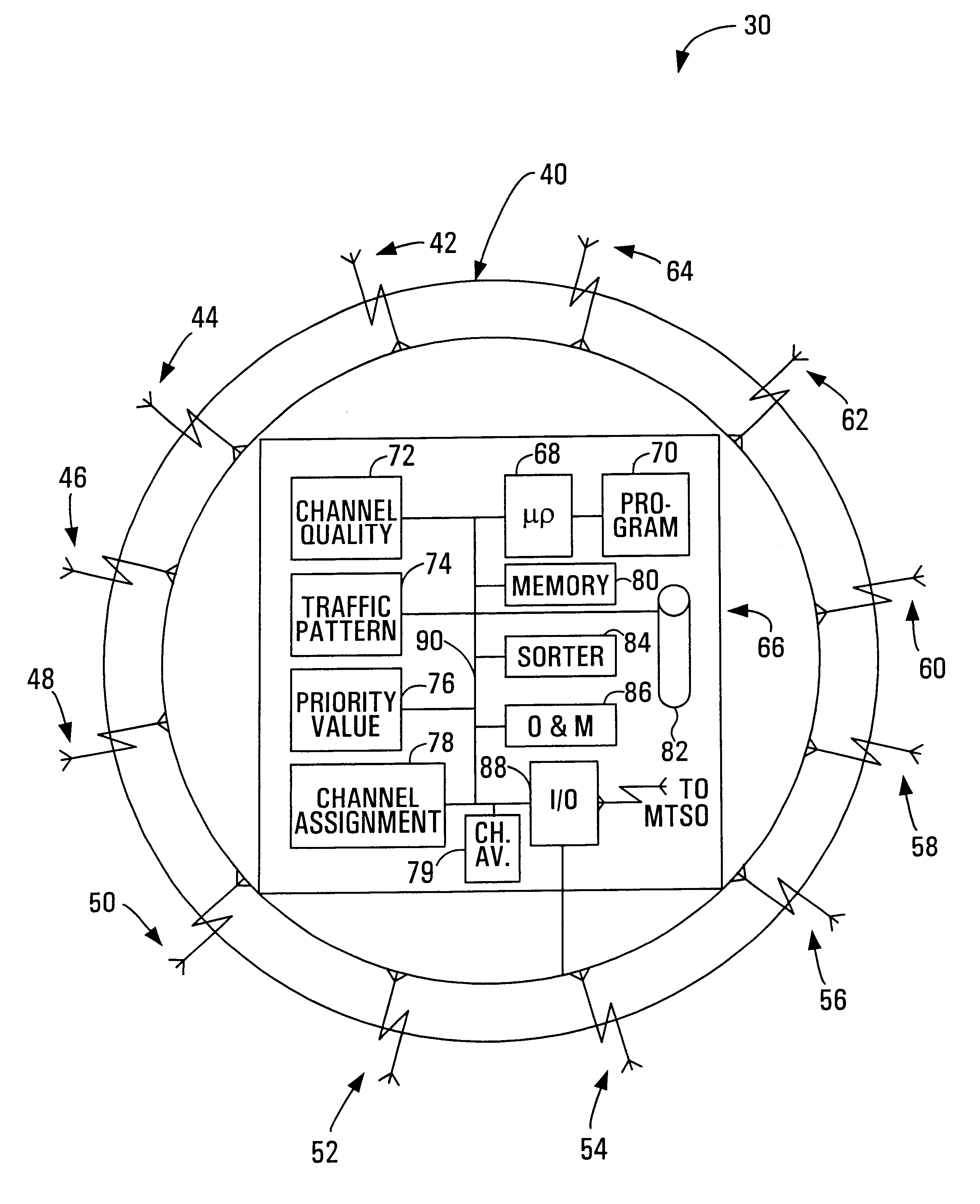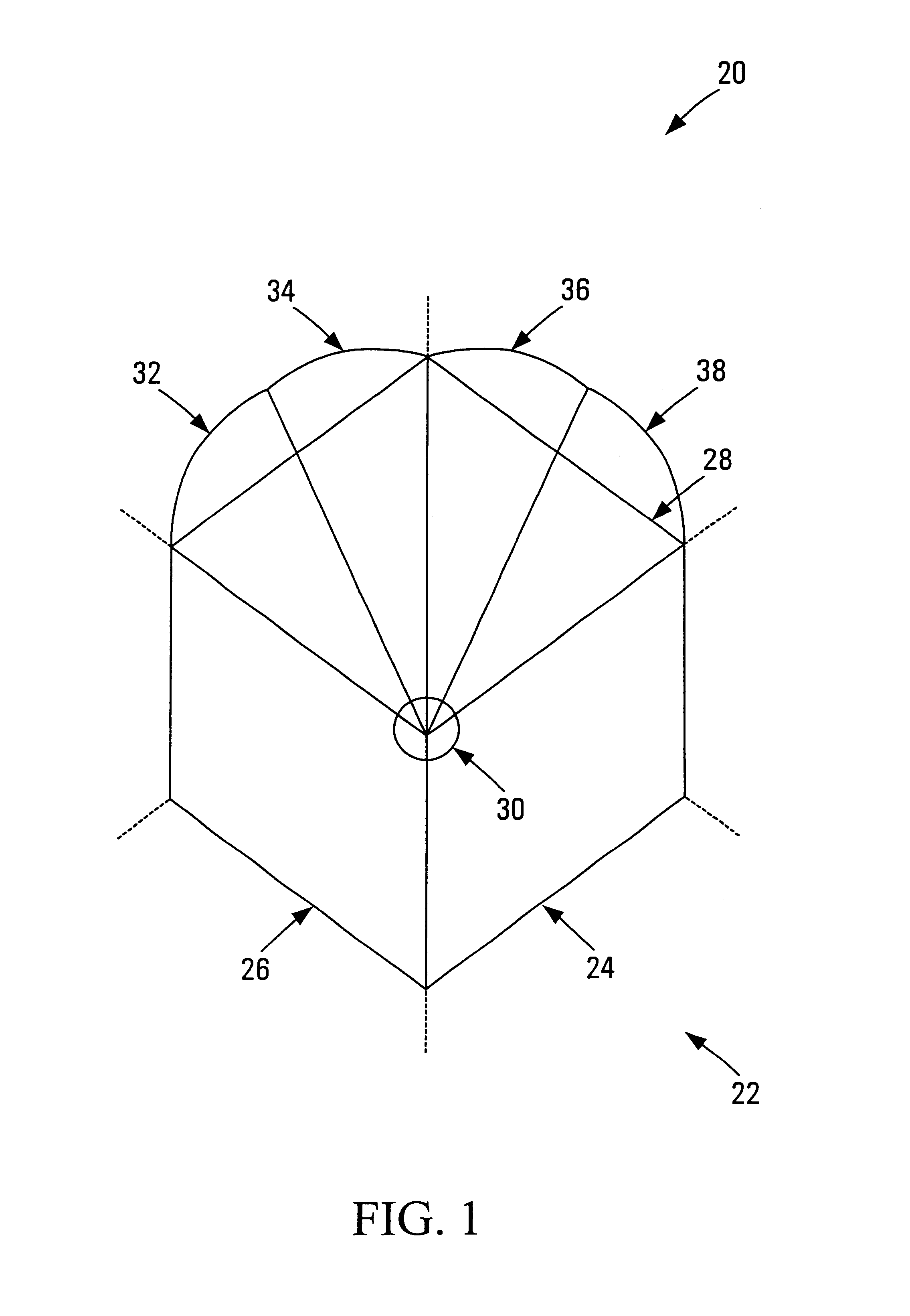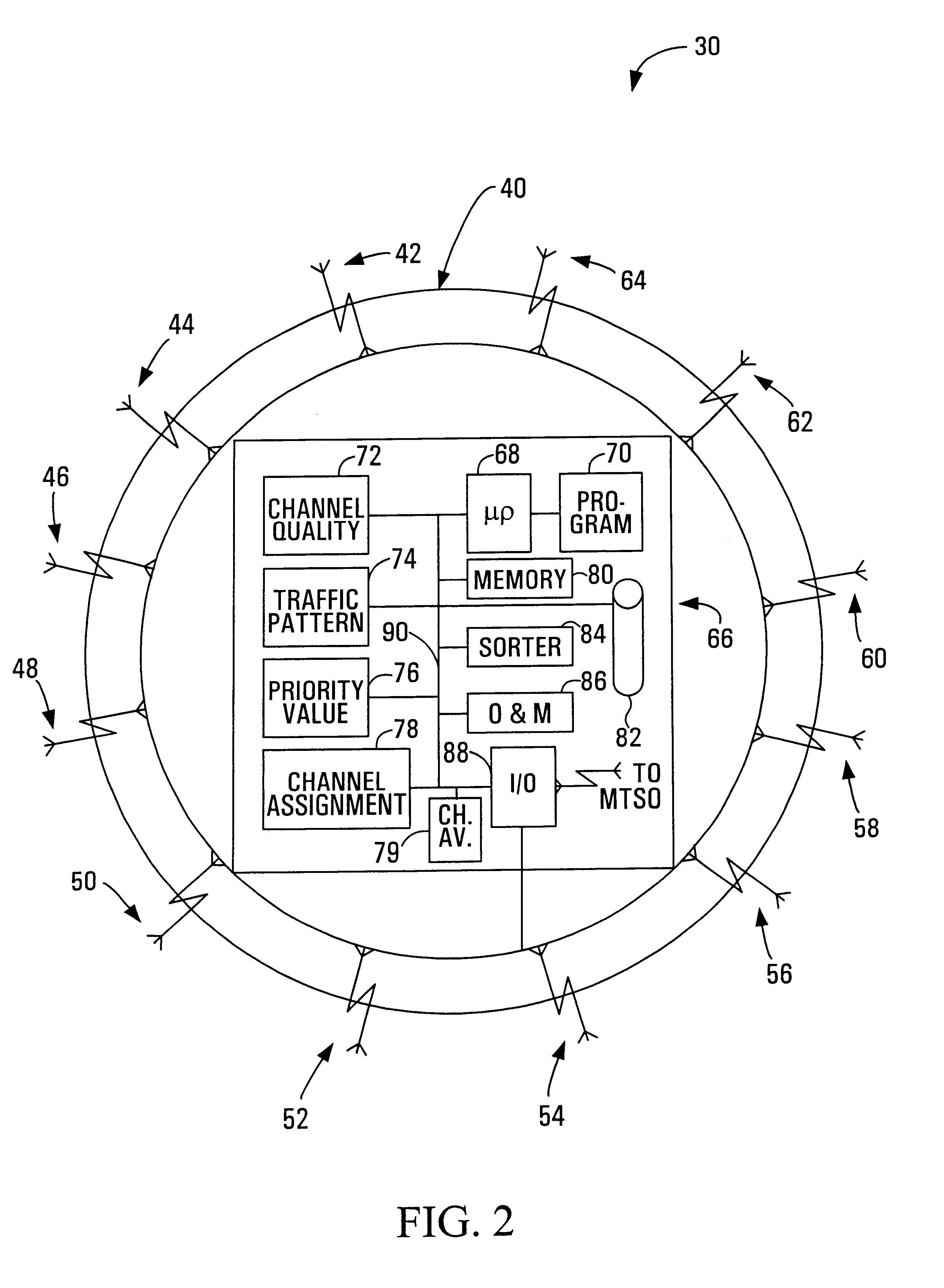Method and apparatus for assigning frequency channels to a beam in a multi-beam cellular communications system
a multi-beam, cellular communication technology, applied in the field of cellular communication, can solve the problems of omnidirectional cell antennae with relatively low call capacity, overly susceptible to interference, and limited number of frequency channels available on any given cell, so as to reduce the likelihood of muting or blocking the call, and reduce the occurrence of muting.
- Summary
- Abstract
- Description
- Claims
- Application Information
AI Technical Summary
Benefits of technology
Problems solved by technology
Method used
Image
Examples
Embodiment Construction
As shown in FIG. 1, a system for assigning frequency channels to a beam in a multi-beam cellular communications system is designated generally by the reference character 20. A geographic region in which wireless communication service is to be provided is divided into a plurality of adjacent hexagonally shaped cells, one of which is shown at 22. In this embodiment, each cell is approximately thirty square kilometers, although it will be appreciated that cells of alternative sizes may be employed.
Each cell is further subdivided into a plurality of sectors. In this embodiment, the cell 22 is subdivided into three 120° sectors 24, 26 and 28, although alternatively the cell may be divided into a different desired number of sectors.
A base station shown generally at 30 is located at the center of the cell 22. Generally, the base station serves as a central transmitter / receiver within the cell for effecting wireless communications with cellular communications subscribers who are presently...
PUM
 Login to View More
Login to View More Abstract
Description
Claims
Application Information
 Login to View More
Login to View More - R&D
- Intellectual Property
- Life Sciences
- Materials
- Tech Scout
- Unparalleled Data Quality
- Higher Quality Content
- 60% Fewer Hallucinations
Browse by: Latest US Patents, China's latest patents, Technical Efficacy Thesaurus, Application Domain, Technology Topic, Popular Technical Reports.
© 2025 PatSnap. All rights reserved.Legal|Privacy policy|Modern Slavery Act Transparency Statement|Sitemap|About US| Contact US: help@patsnap.com



